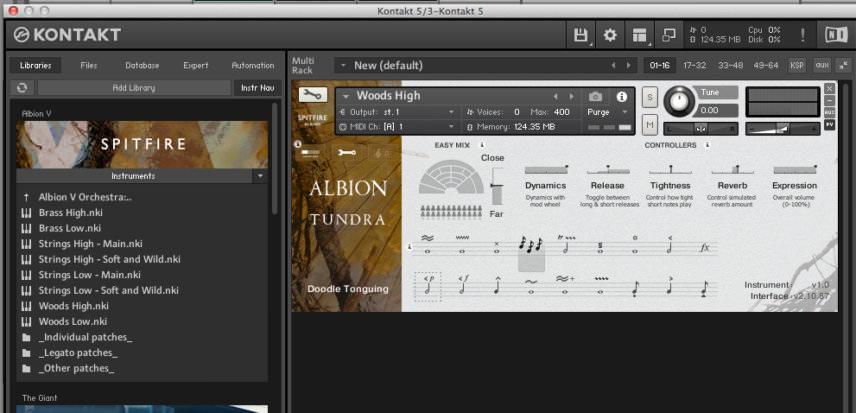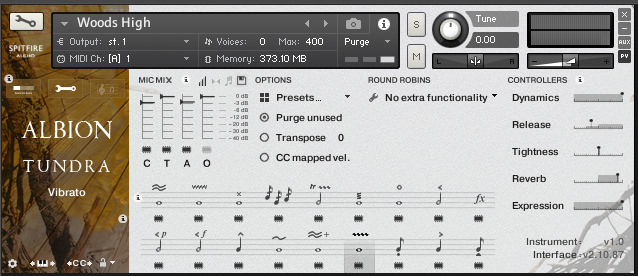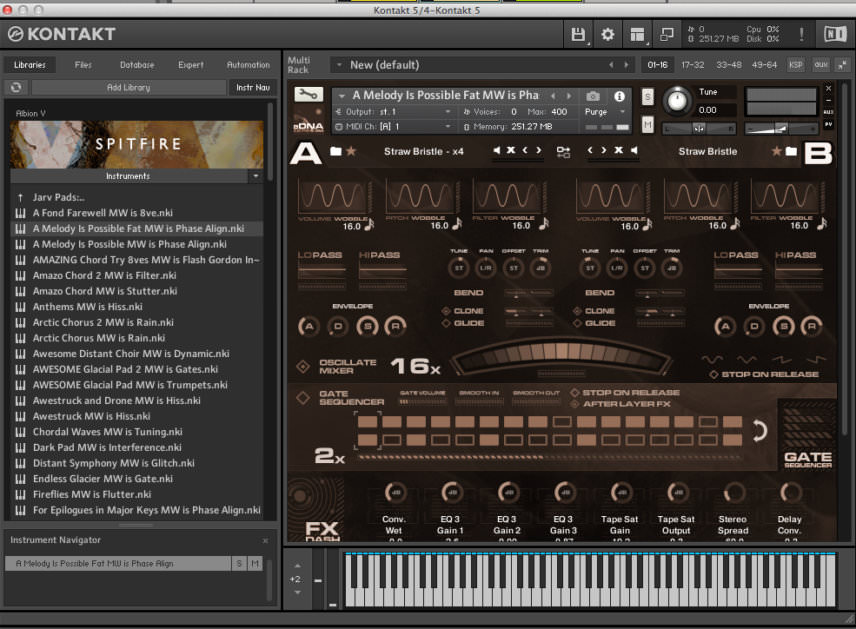
u-he are makers of award-winning software synthesisers and effects including Diva, Repro-1, Zebra2, Hive, Bazille, Presswerk and Satin.
Visit U-he

u-he are makers of award-winning software synthesisers and effects including Diva, Repro-1, Zebra2, Hive, Bazille, Presswerk and Satin.
Visit U-heSynth Secrets is a series of programming tutorials in which we show how to make a range of classic and new synth sounds using plugins such as Massive, Sylenth and Diva.
In this instalment of Synth Secrets we’ll be creating an emotive string breakdown, showing how to combine string samples and synth sounds using a couple of instances of Spitfire Audio’s Albion V Tundra.
Audio PlayerHere’s the MIDI we’ve used for the high string part:
And here’s the MIDI we’ve used for the lower brass sound:
You’ll need either Kontakt 5.5 or the free Kontakt Player in order to load the Tundra instrument. We load Kontakt and then load the ‘Woods High’ instrument located in the Albion V Orchestra section.
We’ve set up a Berlin-style techno loop as a base for this walkthrough, to give some perspective on how effective orchestral sounds can be when used in electronic music. This sequence has a very uplifting and musical breakdown section, which transitions into a much heavier and darker drop section, contrasting nicely.
We play in some chords in the key of A minor. It’ll sound better not to quantise the recording (unless your timing is way off). If you decide to program your pattern in, alter some of the note timings slightly to achieve a more human feel.
Audio Player

A 100-piece orchestra was sampled to tape for this release, and you can really hear the rich and warm, natural sound of the playing. At the bottom of the instrument is the Articulation Switcher, where we can switch between different key articulations. We switch to Vibrato. This gives a nice warm and clean pad sound.
Above the Articulation Switcher we also have five main controllers, where we can adjust Dynamics, Release, Tightness, Reverb and Expression. We keep the Dynamics on full for a more upfront sound, then take down the Release slightly and push up the Reverb setting, adding to the lush sound of the strings.
Audio Player

Hitting on the spanner/wrench icon (just above the Albion logo on the left-hand side) reveals the Expert view and presents us with some extra controls. Some of these are accessible from the Overview page, but we are now also presented with a mixer for the microphones, where we can tweak the balance of the four mics
We also have access to our expression controllers here. It’s worth noting that some of these controls are mapped to your MIDI controllers, so vibrato is mapped to CC#21. We can automate these parameters later.
Audio Player

Listening to our breakdown sequence, it might benefit from a deeper, lower sound playing underneath the strings. We could introduce the second sound after 8 or 16 bars of the initial breakdown sequence to add some progression and increased intensity.
To do this, we load a second instance of Tundra, head to the Stephenson Steam Band instrument and select ‘A Melody is Possible Fat MW is Phase Align’ from the Jarv Pads presets. We create a very simple MIDI sequence, playing back an A2 note for two bars and then switching to a B2 for two bars.
Audio Player

The release is quite large on this sound, so we take the release of both envelopes down slightly. Clicking and dragging the cross-fader in the middle of the instrument changes the tone of the instrument. Clicking to the left gives us more top-end presence, while clicking and dragging to the right gives us a deeper tone, more suitable for our needs.
We switch off the oscillate mixer setting, so that the cross-fader wont reset when we play new keys. Scrolling down to the bottom of the instrument, we click on the FX & Motor button to reveal some extra effect options. We already have an EQ set up here, along with some delay and reverb, but there’s also some extra modulation accessible here. We turn on the phaser effect, turn up the depth and wet mix sightly, for a rich, evolving sound. Playing this back along with our ‘Woods High’ sound, we now have a very full and emotive breakdown section to transition into the drop nicely.
Audio Player31st October, 2016

u-he are makers of award-winning software synthesisers and effects including Diva, Repro-1, Zebra2, Hive, Bazille, Presswerk and Satin.
Download the demos and try them for yourself at www.u-he.com